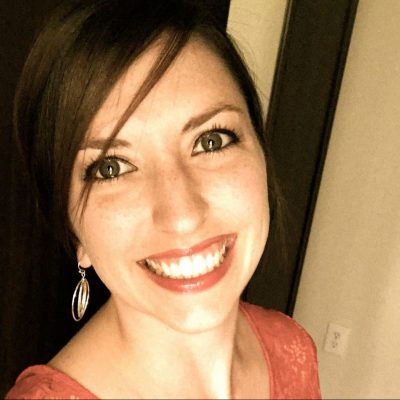11 Buill a’ Chuirp
Sheena Geiger
Activity Summary
This lesson focuses on teaching basic body parts using an interactive children’s song.
Learning Outcomes
Students will:
- Learn new basic body parts vocabulary;
- Improve their aural comprehension of Gàidhlig;
- Improve their spoken Gàidhlig;
- Learn to read body parts vocabulary;
- Enhance memory skills.
Gaelic Level
This lesson was primarily created for beginner Gaelic learners. It is best suited for children, youth, and adults who don’t mind learning through interactive songs.
Lesson Preparation
The instructor will need to:
- Cut up body parts to be put together as a group.
Option 1: Paper images if the students are to complete the activity on the board.
Option 2: Overhead projector sheets if the activity is to be completed on the overhead projector
Option 3: Saved computer images if the activity will be done on a SmartBoard or via Zoom.
- Print out vocabulary boards
- Print off a blank lyric sheet for each student, and an Answer Key for the teacher
- Print off T-chart sheets for each pair of students, or have enough paper for them to create their own.
- Print off an evaluation grid for each student
- Load the two YouTube videos into your browser ahead of time so that they have time to buffer:
- Have a computer (laptop is fine) with loud speakers, hooked up to a projector to project onto a white screen or wall.
Resources Required
Required resources:
- Digital recordings of the Gaelic song and movements (such as the YouTube videos, above);
- Vocabulary boards to hang up;
- Blank lyrics sheet and answer key;
- A quiet space where playing music aloud on speakers won’t disrupt others.
Optional resources :
- Photos of body parts to review vocabulary
- Evaluation grid (if you plan on evaluating student comprehension)
- T-chart sheets (if the students do not come with their own paper)
- Extension cords and power bars (to ensure that the teacher’s laptop will not run out of power);
- Flip charts or flip chart paper and flip chart markers
- OR white boards with white board markers and overhead projector;
- OR SmartBoard with markers.
- High-quality speakers
Lesson Structure (30mins – 2hrs)
|
Time |
Activity |
Resources |
| 15 |
Pre-activity:
Anticipation:
|
|
|
15-30 |
Activity:
Ask students to work with a partner to create a T-chart list of the (appropriate) body parts they already know in Gaelic. Put the English on one side, Gaelic on the other. Ask students to share their brainstorming lists with the group. Put all prior knowledge on the board by labeling the funny bodies. Read through pre-made language boards pronouncing each body part (TIP: mix up the order so that it is different from the song):
Listen to the song on YouTube: Fill in the blanks while listening to the song, then sing together. Answer key:
|
|
|
1hr |
Optional Post-Activity:
|
Evaluation grid |
Variations
- You could have the students use headphone splitters to allow pairs or small groups to work together to listen to the videos and fill in the blanks using their new vocabulary.
- You could have one laptop per student, with headphones, to allow individuals to listen and re-listen to the recordings as many times as needed to fill in the blanks of the song.
- Instead of using a beginner fill-in-the-blank style approach, you could have the advanced students transcribe the entire song, using no template.
- Depending on the age and physical activity, you could have students dance along with the song. You could sing it slow, medium, and as fast as possible to make it fun and interactive for students, while having them focus on proper pronunciation. You could make it into a friendly group competition to see who performs it the best, so that students take the time to focus on both their pronunciation and corresponding body parts. Then they vote on the best performers.
- You could have students go home and record themselves teaching the song to their siblings, friends, neighbours, elders, etc.
- You could have advanced students substitute out the basic body parts for more complex ones that are not included in the song, then teach each other, while still using the basic structure of the song.
Preparing for Challenges
You may wish to prepare for any of the following potential challenges:
- Technical issues, whether due to equipment failure, loss of internet, power outage, or students’ lack of familiarity with YouTube;
- Load the YouTube videos ahead of time in separate browsers, so that they both have time to buffer and any ads can be skipped;
- Student frustration if the song seems too young for them;
- Student frustration if they do not want to sing or do the accompanying movements;
- Student frustration if the audio recording or song is particularly difficult to transcribe;
- Student frustration with unfamiliar vocabulary or dialects.
Lyrics
Ceann, gualainn, glùinean, cas.
Glùinean, cas, glùinean, cas.
Ceann, gualainn, glùinean, cas.
Sùilean, cluasan, ’s beul, agus sròn
Head, shoulders, knees, toes.
Knees, toes, knees, toes.
Head, shoulders, knees, toes.
Eyes, ears, mouth, and nose.
Ceann, gualainn, glùinean, cas, glùinean, cas.
Ceann, gualainn, glùinean, cas, glùinean, cas.
Agus sùilean, cluasan, sròn, agus beul.
Ceann, gualainn, glùinean, cas, glùinean, cas.
Head, shoulders, knees, toes, knees, toes.
Head, shoulders, knees, toes, knees, toes.
Eyes, ears, mouth, and nose.
Head, shoulders, knees, toes, knees, toes.


